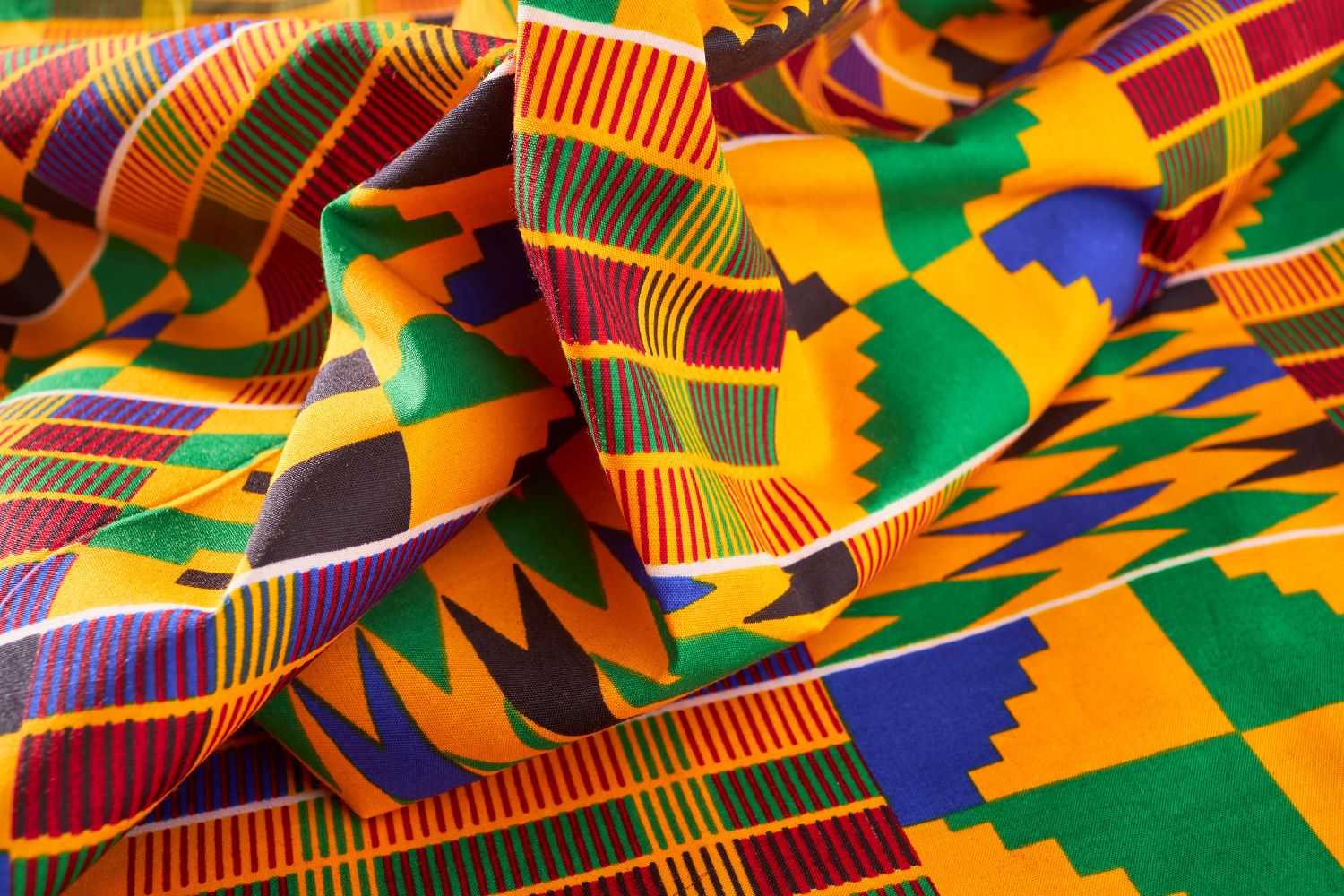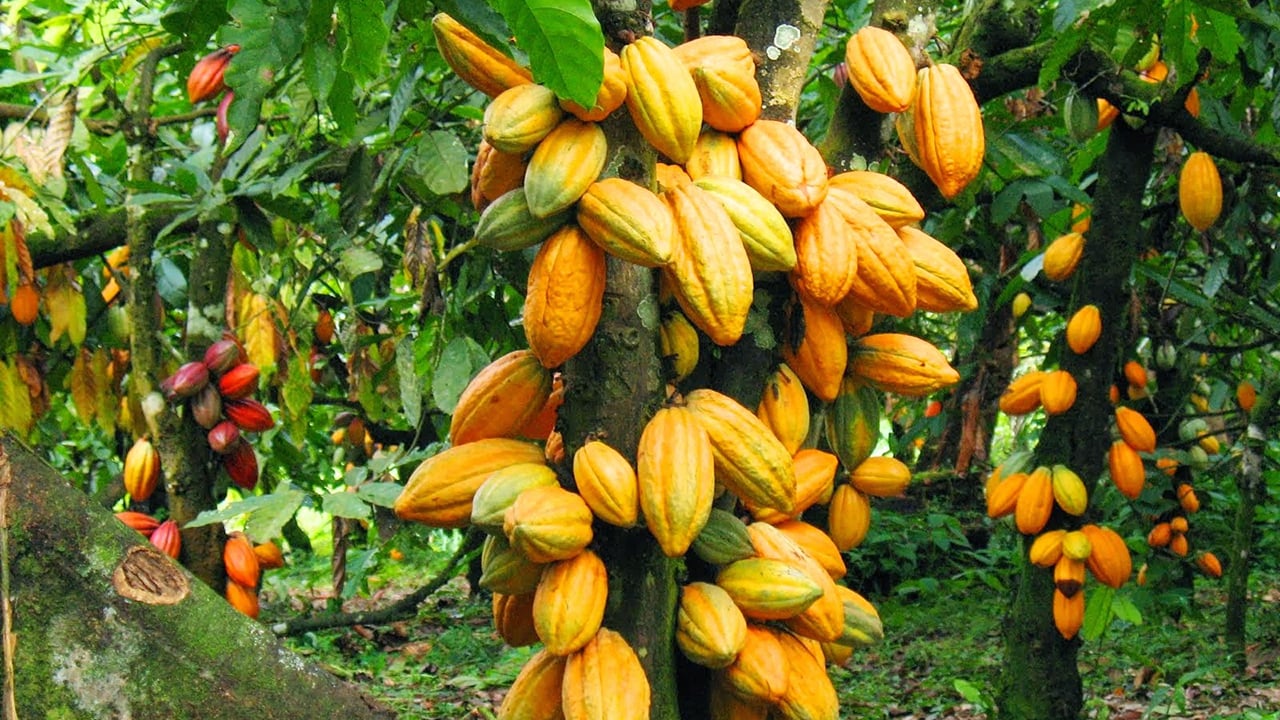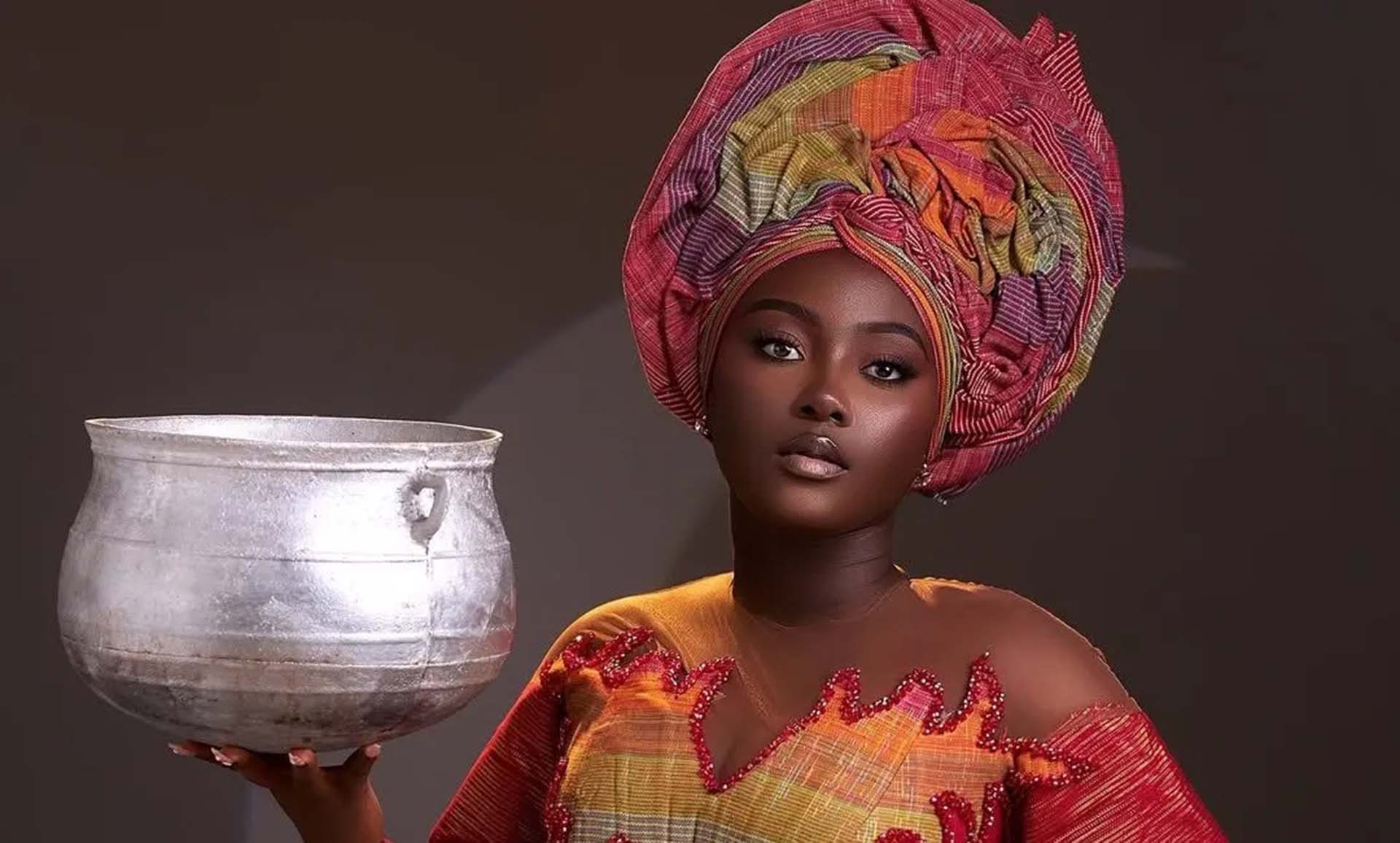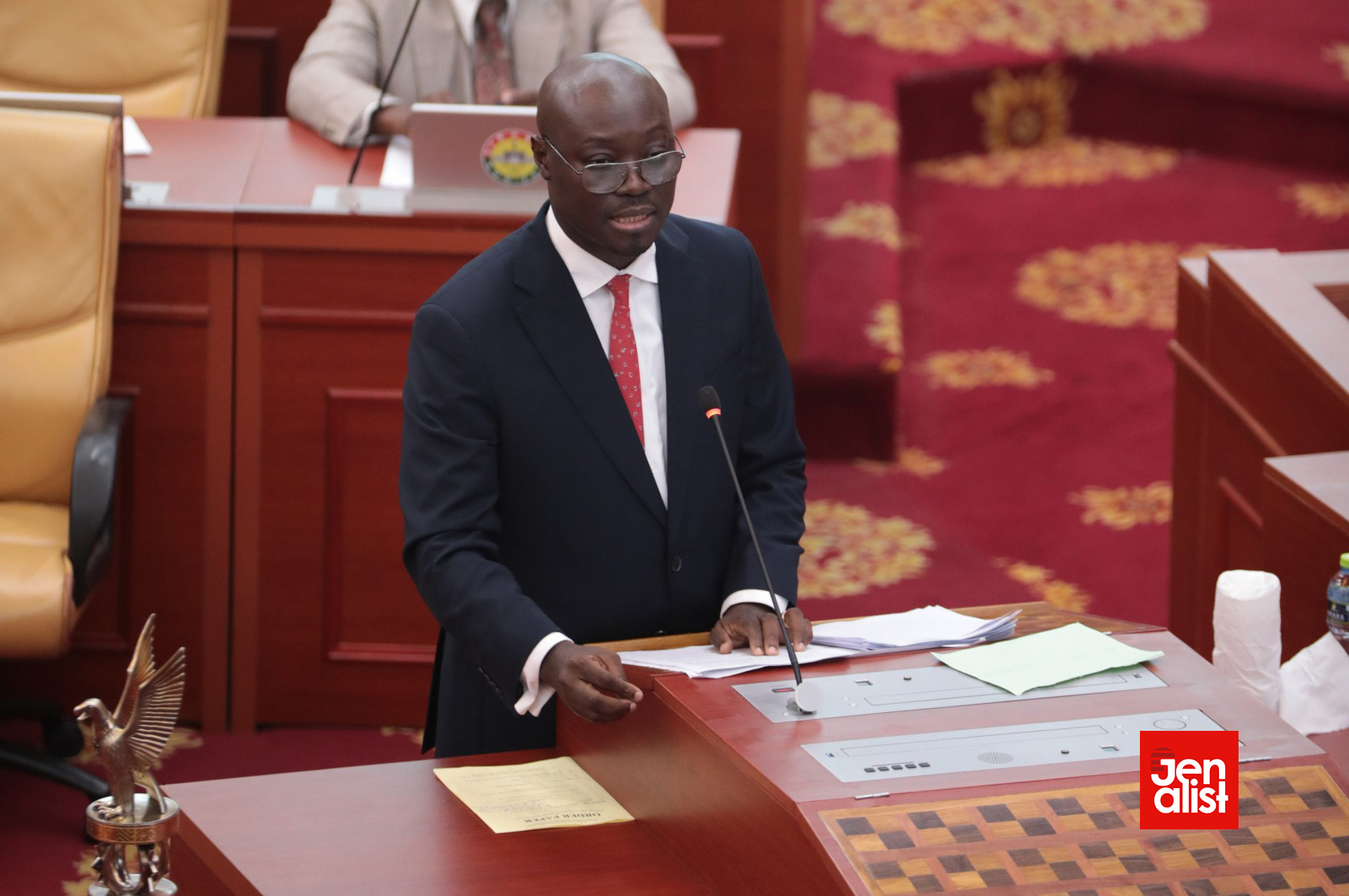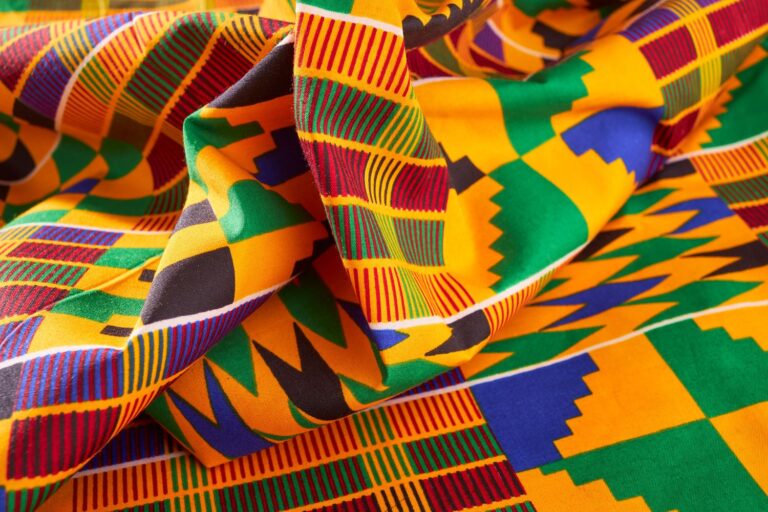In the world of African textiles, few fabrics command as much respect, admiration, and cultural pride as Kente cloth. Often referred to as “Ghana’s royal cloth,” Kente is far more than fabric—it’s a powerful symbol of identity, heritage, and legacy, woven by hand and rich with meaning.
✨ Origins of Kente: A Cloth Born from Legend
The story of Kente begins in the town of Bonwire, in Ghana’s Ashanti Region, where it is believed that two brothers learned the technique of weaving by watching a spider spin its web. Inspired by nature’s pattern and rhythm, they created a new form of textile that combined beauty, geometry, and symbolism. That cloth would become what we now know as Kente.
Initially, Kente was reserved for Ashanti royalty and spiritual leaders, worn during sacred ceremonies and state occasions. It was—and still is—a visual language of power, respect, and history.

The Art of Weaving Kente
Kente is traditionally woven by male artisans using narrow, hand-operated looms. Strips of fabric, usually four to six inches wide, are stitched together to form a complete cloth. The weaving process requires intense concentration and skill, often taking days or even weeks to complete a single piece.
Every pattern, color, and arrangement in Kente carries meaning. Here are a few common elements and their interpretations:
Colors:
- Gold – Royalty, wealth, spiritual purity
- Green – Renewal, fertility, growth
- Red – Political and spiritual sacrifice
- Blue – Harmony, peace, love
- Black – Maturity, spiritual energy, ancestral respect
Patterns:
Each pattern or motif has a name and story. For example:
- “Eban” (fence) represents safety and security.
- “Eban Ne Obo” (fence and stone) stands for strength and protection.
- “Fathia Fata Nkrumah” celebrates the union between Ghana’s first president, Kwame Nkrumah, and his Egyptian wife, Fathia.
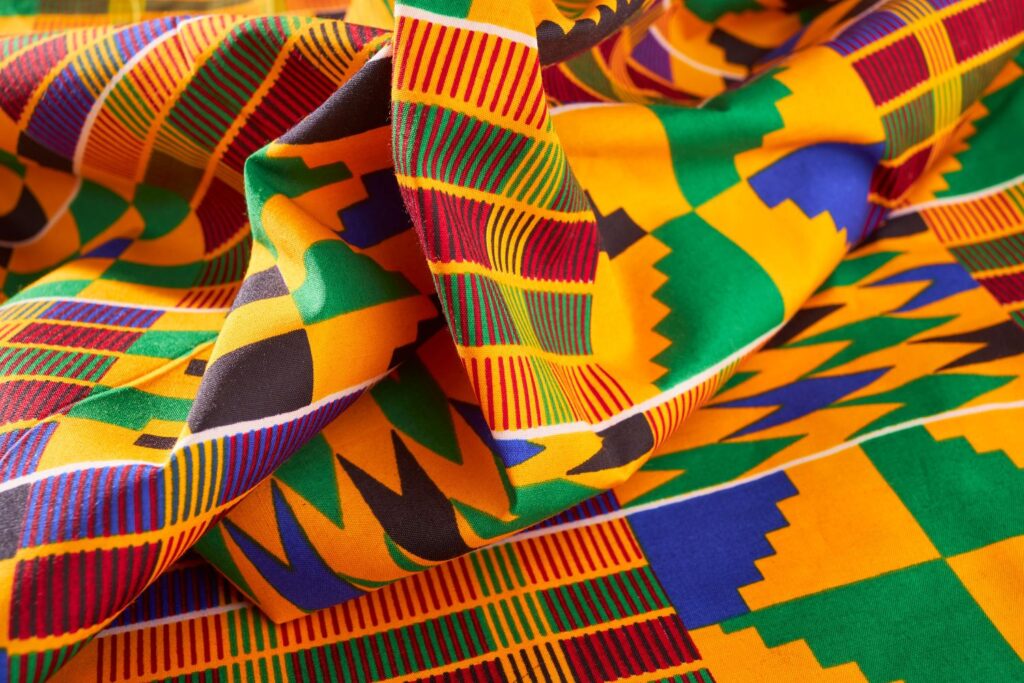
From Royalty to Everyday Identity
While Kente began as a symbol of royalty, it has evolved into a universal symbol of Ghanaian pride and African excellence. Today, Kente is worn not only during state functions and festivals but also at graduations, weddings, church ceremonies, and even fashion runways around the world.
In fact, the Bonwire Kente Festival, held annually, celebrates the craft and its cultural roots. Visitors come to see master weavers at work, learn about Kente’s deep meanings, and appreciate its role in Ghana’s economy and identity.
Kente in the Global Spotlight
Over the years, Kente has become a global cultural icon. From Hollywood red carpets to academic graduation gowns, Kente has been embraced as a symbol of African identity and solidarity. Influential figures—from Beyoncé to Nelson Mandela—have worn Kente-inspired designs to connect with their African roots.
This global visibility has opened up economic opportunities for Ghanaian artisans, while also prompting important conversations around cultural appreciation versus appropriation.
Why Kente Still Matters
In today’s fast-paced digital world, the tradition of hand-weaving Kente reminds us to slow down and value craftsmanship, heritage, and intentionality. Each cloth is a record of stories passed down through generations—stories about leadership, resilience, unity, and transformation.
For many Ghanaians, wearing Kente is not just about fashion—it’s a declaration of who they are and where they come from.
🧠 “To wear Kente is to wear history. To weave it is to preserve culture.”


